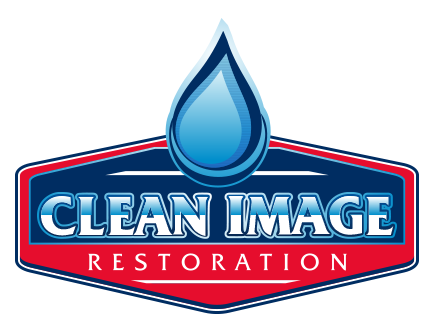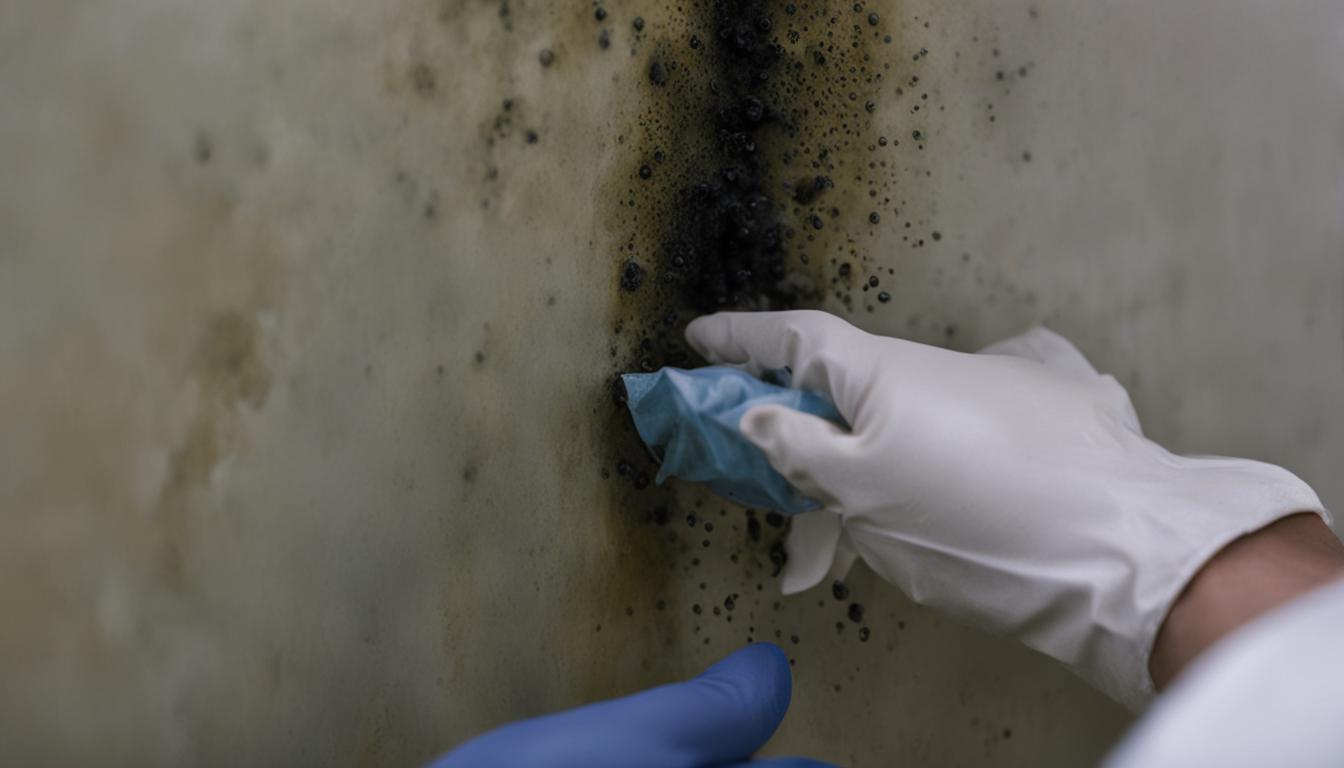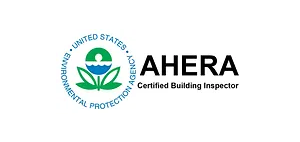Black mold is a common type of mold that can grow in damp, humid environments, such as bathrooms, kitchens, and basements. While it may seem harmless, black mold can pose serious health risks to you and your family if it goes unnoticed or untreated in your home. The question is, is it safe to live in a house with black mold?
The answer is no. Exposure to black mold can lead to various health problems, including respiratory issues, allergic reactions, and even neurological symptoms. In this article, we’ll explore the potential hazards of black mold, its health effects, and what steps you can take to address it in your home.
Key Takeaways:
- Black mold can pose serious health risks to you and your family if left untreated.
- Exposure to black mold can lead to respiratory issues, allergic reactions, and even neurological symptoms.
- If you suspect you have black mold in your home, it’s important to assess the severity of the infestation and take action to remediate it promptly.
- Vulnerable populations, such as young children and elderly individuals, may be more susceptible to health risks related to black mold exposure.
- Prevention is key when it comes to black mold, so be sure to address any leaks or moisture in your home as soon as possible.
Understanding Black Mold and its Potential Hazards
Black mold, also known as Stachybotrys chartarum, is a type of toxic fungus that can develop in damp indoor areas with poor ventilation. It thrives in humid conditions and often grows in hidden places like behind walls, under carpets, and above ceiling tiles.
Exposure to black mold can pose potential hazards to your health. The mold spores can release mycotoxins which can lead to a variety of symptoms, including respiratory problems, headaches, skin irritation, and fatigue. In severe cases, black mold exposure can even cause neurological symptoms and bleeding in the lungs.
It’s important to understand the potential hazards of black mold and take action to prevent its growth in your home. Regular cleaning and maintenance can help keep your living spaces dry and well-ventilated, reducing the likelihood of black mold formation.
Health Effects of Black Mold Exposure
Exposure to black mold can have serious health effects on your body. When inhaled or come into contact with the skin, black mold spores can trigger various respiratory and allergic reactions.
Some of the health effects of black mold exposure include:
- Wheezing and difficulty breathing
- Coughing and persistent sneezing
- Irritation of the eyes, nose and throat
- Chronic fatigue and headache
- Brain fog and memory loss
- Weakened immune system
In some cases, prolonged exposure to black mold can lead to severe health problems such as pneumonia, bronchitis, and even neurological disorders.
If you are experiencing any of these symptoms, it is crucial to seek medical attention immediately. Do not underestimate the health risks of black mold exposure.
Symptoms of Black Mold Exposure
If you have black mold in your home, you may experience a range of symptoms. These symptoms can range from mild to severe and can affect different parts of your body.
Common symptoms of black mold exposure include:
- Coughing
- Sneezing
- Wheezing
- Runny or stuffy nose
- Itchy or watery eyes
- Skin irritation or rashes
- Headache
- Dizziness
- Nausea or vomiting
- Fatigue
If you have a pre-existing respiratory condition or weakened immune system, you may be more susceptible to severe symptoms from black mold exposure, such as:
- Fever
- Shortness of breath
- Chronic cough
- Chronic fatigue
If you are experiencing any of these symptoms, it is important to consider black mold exposure as a possible cause.
Vulnerable Populations and Black Mold
While black mold exposure can be concerning for anyone, certain groups may be more vulnerable to its health effects. These include:
- Elderly individuals
- Individuals with pre-existing respiratory conditions, such as asthma or allergies
- Young children
- Immune-compromised individuals, such as those undergoing chemotherapy or with HIV/AIDS
For these populations, exposure to black mold can exacerbate symptoms or lead to more severe health problems. It is especially important for these individuals to address black mold infestations in their homes promptly.
Assessing the Severity of Black Mold Infestation
If you suspect there is black mold in your home, it is important to assess the severity of the infestation as quickly as possible. The severity of black mold infestation can range from minor to severe, with the latter being particularly dangerous and requiring urgent attention.
There are several signs to look out for when assessing the severity of black mold infestation, including:
- Visible mold growth – If you can see mold growing in your home, the severity of the infestation is likely to be higher.
- Strong, musty odor – Black mold often has a strong, musty odor that can indicate the presence of a significant infestation.
- Water damage – Any areas of your home that have been affected by water damage are more likely to have black mold infestations.
- Health symptoms – If you or anyone in your household is experiencing health symptoms that may be related to mold exposure, this could indicate the severity of the infestation.
If you have identified any of these signs, it may be necessary to seek professional help to assess and remediate the situation. A professional can provide you with a detailed assessment of the situation, including the extent of the damage and the appropriate steps to take to address the infestation.
Steps to Take if You Have Black Mold in Your Home
If you suspect black mold in your home, it’s crucial to take action immediately. Follow these steps to remediate and prevent further spread:
- Confirm the presence of black mold: Black mold often appears in damp areas with high humidity levels, like bathrooms, kitchens, or basements. Look for visible signs of mold, such as black or green patches on walls, ceilings, or floors. If you’re unsure, you can purchase a mold testing kit from a hardware store or hire a professional mold inspector for an accurate assessment.
- Protect yourself: When dealing with black mold, it’s essential to wear protective gear, including gloves, goggles, and masks to prevent inhalation of mold spores. If you have any underlying respiratory issues, you may want to leave the area and seek help.
- Remediate the mold: If the affected area is less than ten square feet, you can typically remove it yourself using a mold removal spray or a solution of water and bleach. Use a scrub brush to clean the mold off surfaces, and then dispose of the contaminated materials in a sealed bag. If the area is extensive, it’s best to contact a professional mold removal service to avoid further contamination.
- Prevent further mold growth: After cleaning up mold, it’s essential to address the cause of the mold growth. Fix any leaks or water damage, maintain proper ventilation, and reduce humidity levels in your home. Consider installing a dehumidifier to keep moisture levels in check.
Remember, black mold can pose severe health risks if left untreated, and it’s crucial to take action promptly to protect your home and health.
Conclusion
Living in a house with black mold can pose serious health risks to you and your family. It is important to understand how black mold can develop and the potential hazards it can cause. Exposure to black mold can lead to various health effects, and certain populations may be more susceptible than others.
If you suspect that you have a black mold infestation in your home, it is crucial to assess the severity of the issue and take steps to remediate it promptly. This may include removing affected materials, improving ventilation, and reducing moisture levels.
Remember that prevention is key when it comes to black mold. Regularly inspecting your home for signs of mold growth and addressing any moisture issues can help to prevent infestations from occurring in the first place.
Don’t take any risks when it comes to your health and the health of your loved ones. If you suspect that your home may have black mold, take action immediately to address the issue and ensure that your living environment is safe and healthy.
FAQ
Is black mold in homes safe?
No, black mold in homes can pose significant health risks.
What is black mold?
Black mold is a type of fungus that can grow in homes due to excessive moisture.
What are the potential hazards of black mold?
Exposure to black mold can lead to respiratory issues, allergies, and other health problems.
What health effects can result from black mold exposure?
Black mold exposure can cause coughing, wheezing, nasal congestion, skin irritation, and even more severe symptoms in some cases.
What are the symptoms of black mold exposure?
Symptoms of black mold exposure can include respiratory issues, such as coughing and sneezing, as well as headaches, fatigue, and allergic reactions.
Who are the vulnerable populations when it comes to black mold exposure?
Vulnerable populations include young children, older adults, individuals with weakened immune systems, and those with pre-existing respiratory conditions.
How can I assess the severity of a black mold infestation in my home?
Look for visible signs of mold growth, such as discoloration and musty odors. If you suspect a severe infestation, it is advisable to seek professional assistance.
What steps should I take if I have black mold in my home?
Take immediate action to address the moisture issue causing mold growth. Clean visible mold, improve ventilation, and consider professional mold remediation if necessary.






